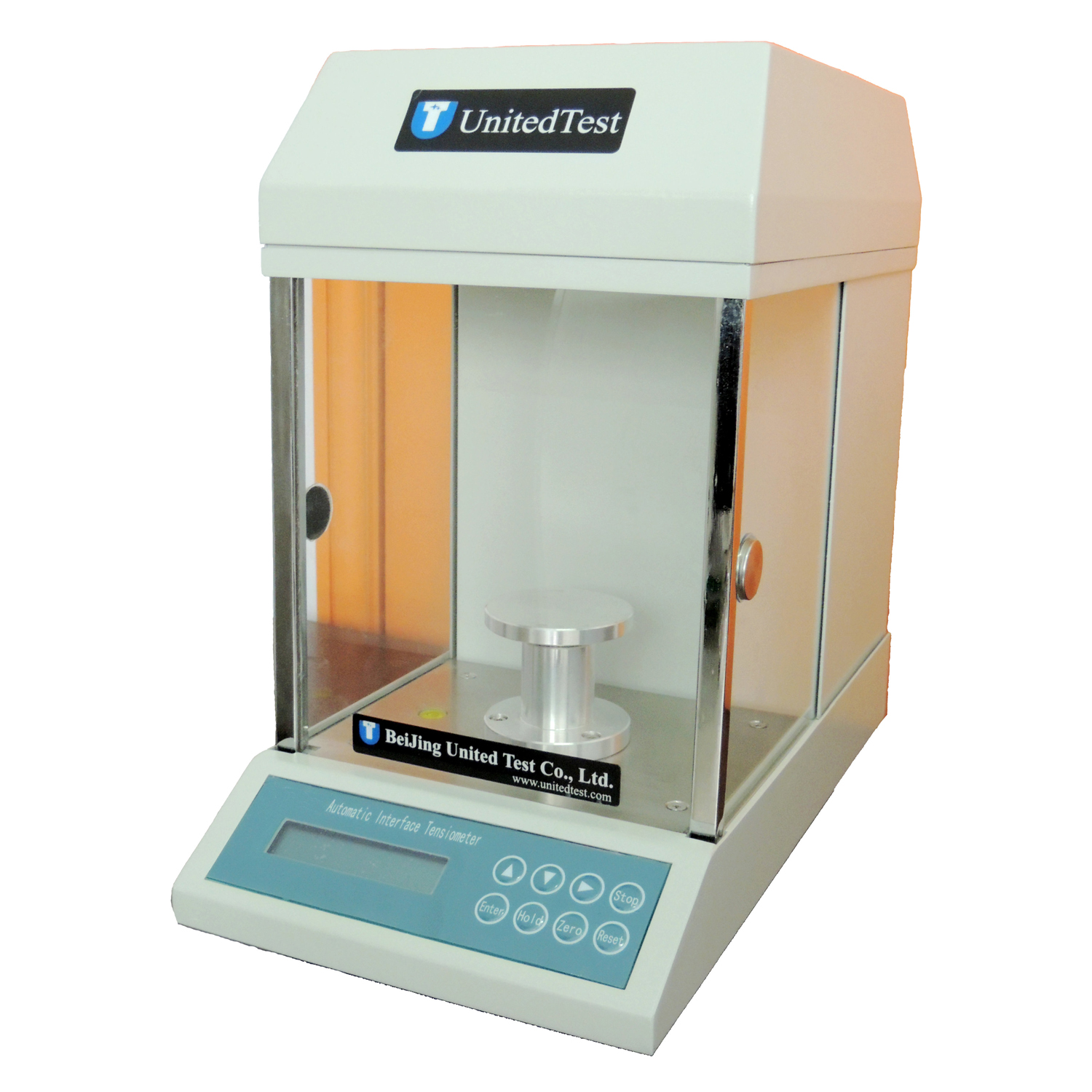- Universal testing machine
- Fixtures
- Medical/Biomedical device
- Vehicles motorcycle
- Compression/Flexural test
- Hardness tester
- Impact testing machine
- Torsion testing machine
- Abrasion & wear tester
- Plastic & Pipe testing
- Tensiometer / Goniometer
- Erichsen cupping tester
- Other Testing Equipment
- Grinding & polishing machine
- Spring testing machine
- Introduction
- Specification
- Accessories
- Standard
- LEAFLET & VIDEO
- Contact Us
The liquid is placed in a heated sample container, a capillary made of glass or teflon will be immersed in the liquid at a given depth of immersion, the capillary tube is connected to a gas interface and a sensitive pressure sensor, during the test, the gas or inert gas through the capillary tube, forming bubbles at the capillary end, and measuring the pressure of this bubble. When the bubble pressure tension meter TEN400 continuously increases the rhecity of the gas, the frequency of bubble formation accelerates, and the survival time of each bubble decreases accordingly. The foaming speed and frequency are set during the experiment. When the bubble radius at the end of the capillary tube is equal to the radius of the capillary, the bubble pressure reaches the maximum value. The bubble pressure is significantly reduced once the bubble radius exceeds the capillary radius. The maximum pressure to produce bubbles is proportional to the dynamic surface tension. Hydrostatic pressure P is proportional to the immersion depth of the capillary tube.

The bubble pressure tensiometer is an instrument used for determining the dynamic surface tension of liquids and wetting characteristics of surface active liquids in cleaning baths. A quick and flexible method, the bubble pressure tensiometer is used in quality control, research and development for characterisation of water-based solutions such as surfactants, polymers, acids and bases.
When measuring the surface tension in accordance with the bubble pressure method a capillary is dipped into the liquid and an air-current is directed into it. Through the increasing gas pressure, a gas bubble forms at the lower end of the capillary, the radius of which reduces permanently. When the bubble radius equals that of the capillary, the gas bubble bursts and breaks away from the capillary. At that moment the gas pressure reaches its maximum. In accordance with the special form of the Laplace-relation, the maximal pressure and the surface tension correlate.
Model | TEN400 |
Measuring range | 10 ~100 mN/m |
Resolution | 0.01 mN/m |
Accuracy | 0.1 mN/m |
Range of bubble frequency | 50 ~ 0.2 bubble number / second |
Location control | Adjustable |
Surface age | 20 ~ 5000 ms |
Temperature range | 10℃ - 80℃ (add the temperature bath) |
Resolution of temperature | ±0.1℃ |
Dimensions | 400*320*400mm |
Weight | 18kg |
Power | 220V, 50HZ |
Item | Quantity |
Frame | 1 set |
Capillary | 2 pc |
Serial extension line | 10 pc |
Crystallizing dish | 1 pc |
Computer | 1 pc |
Circulation thermal insulation platform (optional) | 1 set |
Constant temperature chamber (optional) | 1 set |
English version software | 1 set |
Power cord | 1 set |
Documents (Manual, packing list, certificate) | |













